The cheating husband, the poisoning wife, the vengeful butler, and Colonel Mustard hiding in the conservatory with the candlestick. Crime fiction, like any genre, has its clichés. But as anyone who has read a police blotter knows, criminals can get pretty weird. Even the usual suspects can commit robberies and murders in the most unusual ways. This is why shows like Law and Order enjoying telling stories “ripped from the headlines.” If true crimes are stranger than fiction, why not turn the truth into fiction? However, fiction has more strangeness than it’s sometimes given credit for. Crime fiction, especially, is a flexible genre, blending easily with surrealism or science fiction and showing us bizarre killers, oddball detectives, and uncanny crimes. Here are ten of the strangest crimes in literature, ranging from the weirdly realistic to the utterly impossible.

Vladimir Nabokov, Invitation to a Beheading
“In accordance with the law the death sentence was announced to Cincinnatus C. in a whisper.” This is the opening of Nabokov’s weirdest and perhaps most underrated novel, Invitation to a Beheading. The story tells the final days of C. as he awaits execution for his crime of “gnostical turpitude” in a jail where the executioner poses as an inmate and the jailer brings moths to feed the cell spiders. This bizarre crime of “gnostical turpitude” roughly translates as “wicked knowledge,” but the crime’s meaning is intentionally absurd in this surrealist novel that can’t help feeling like Nabokov rewriting Kafka’s The Trial (in a good way!) despite Nabokov’s claim to have written it before reading the Czech master’s work.

Patricia Highsmith, The Animal-Lover’s Book of Beastly Murder
Is it a crime if the family pet murders its master? Or hamsters invade a suburban yard to grisly result? In this story collection, crime queen Patricia Highsmith turns away from your typical human murders, thefts, and schemes to instead plot tales of animal revenge. Alternatively satirical and macabre, Highsmith turns a misanthropic eye to the crimes humans commit against their animal neighbors and imagines the bloody revenges they might enact.

Roberto Bolaño, Distant Star
Bolaño’s famous long works, The Savage Detectives and 2666, are both detective novels of a sort. (2666’s infamous “The Part about the Crimes” by itself would be one most horrifying crime novels ever written.( But Bolaño’s slim 1996 novel Distant Star revolves around the strangest crime in any of his books. During the 1970s coup in Chile, a fascist pilot named Alberto Ruiz-Tagle launches his idea of “New Chilean Poetry” that is less interested in sonnets and meter than skywriting, torture, and murder.
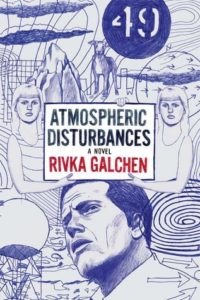
Rivka Galchen, Atmospheric Disturbances
“Last December a woman entered my apartment who looked exactly like my wife.” Many great detective novels begin with someone’s spouse mysteriously disappearing, but Rivka Galchen’s debut might be the only book that begins with a wife disappearing…and the husband finding a mysterious doppelganger who looks and acts exactly like the missing wife. At least that’s what Dr. Leo Liebenstein suspects in this clever and darkly comic mystery.
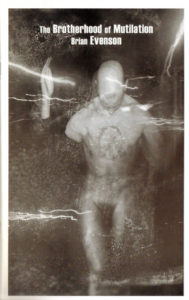
Brian Evenson, The Brotherhood of Mutilation
What would you get if you blended up Raymond Chandler and the Saw franchise? Perhaps something like the story of Kline, a detective who loses a hand during a case and is then hired to solve a murder in a cult that believes amputations lead to the divine. The bizarre cult takes the Biblical quote “and if thy right hand offend thee, cut it off” to gory extremes, creating a hierarchy where the more parts you amputate the holier you get. Brian Evenson is a modern master of horror, and the novella, The Brotherhood of Mutilation—which was expanded into the novel Last Days—is one of the grisliest and weirdest detective books you’ll ever read.
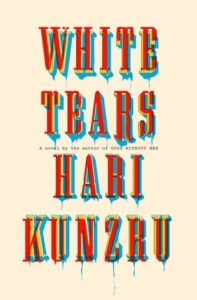
Hari Kunzru, White Tears
Copyright infringement doesn’t normally have violent consequences. Then again, copyright infringement doesn’t normally summon a vengeful spirit. Kunzru’s 2017 novel tells the story of two white college students who become obsessed with authentic blues music. Seth and Carter get involved in the seedy world of record collecting, and the legacy of white America’s theft of black music and lives, and then somehow produce their own fake blues record that seems to awaken a vengeful ghost. Murders both attempted and successful are unearthed in this brilliantly strange and moving novel about race, power, and music in America.
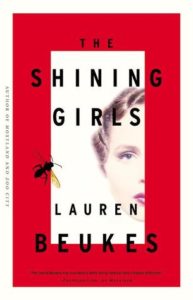
Lauren Beukes, The Shining Girls
The South African writer Lauren Beukes has made a career out of bizarre genre-bending crime novels. Zoo City takes place in a science fiction world where criminals have animals magically attached to them as punishments. Broken Monsters features a killer who sews the corpses of animals and humans together. But perhaps her strangest criminal is featured in The Shining Girls, about a depression-era drifter who finds a house that contains portals to other time periods and becomes a time-traveling serial killer of bright young girls.

Kobo Abe, The Box Man
In Abe’s aptly named novel, a man gives up on modern Tokyo life to live inside of a large cardboard box. A simple life. Well, at least until he is shot by an unknown assailant and finds himself entangled with a femme fatale nurse and mad doctor who wants to steal his box for himself. The narrator (or narrators?) scrawl the mystery on the inside of the box itself, as the nature of reality and the self seem to dissolve.
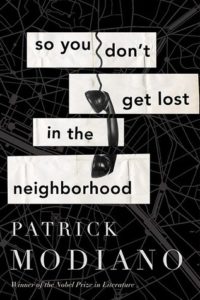
Patrick Modiano, so you don’t get lost in the neighborhood
Less a strange crime than a strange way of revealing a crime, Nobel Prize winner Patrick Modiano’s 2014 novel flips the normal mystery plot on its head. Most detective novels open with a murder or break-in, then solve the case over the course of the book. Here, the crime is repressed and it takes until the very end of the novel for its existence to even be revealed. Novelist Jean Daragane receives a phone call from a man who found his address book. But the man, and his femme fatale sidekick, don’t want to simply return it, they want to know about one of the entries: Guy Torstel. The name sends Daragane into an investigation into his own memory, transforming the novel from a hardboiled noir into a Proustian examination of memory and trauma, and how the city one lives in can be transformed by both.
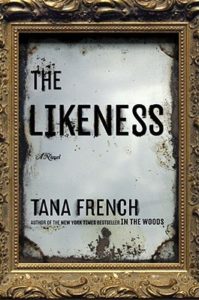
Tana French, The Likeness
In the second novel of French’s acclaimed Dublin Murder Squad crime series, detective Cassie Maddox stumbles upon a bizarre murder victim: herself. Or, rather, a doppelganger who has the same name as an alias Maddox used on a previous undercover assignment. Maddox then has to impersonate the woman who was impersonating her to solve the case. She moves into a Gothic house, living with the dead woman’s possibly murderous roommates, as her reality begins to blur with the deceased.

















